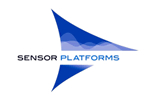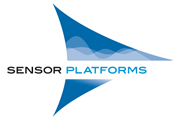Since the debut of HAL 9000 in 1968, there have been countless fictional computers in the movies that achieved sentience. An important component of being sentient is the ability to sense one’s surroundings; and in that regard, electronic devices have seen significant progress. Take the modern smart phone: it can listen through its microphone(s) and see through its camera(s). It can respond to motion, react to ambient light and temperature, and reply to a human’s touch. Some even have the super-human abilities to hear ultrasound, sense magnetic field, measure atmospheric pressure and translate one language to another. Yet, no one but a Hollywood writer would expect us to interact with our phone or computer as if it is an intelligent companion.
Even as advances in material sciences and electronics endows our electronic devices with astonishing abilities to sense their environments, understanding the sensor data and context is often lagging. A magnetometer in a smartphone can measure magnetic fields but it takes more than that to become a compass.
First, it needs to free itself from the contaminating influences of any magnetic materials or electrical circuits to get at the Earth’s field. Some smartphones aren’t too intelligent in the way they react to magnetic interference. They report an erroneous magnetic heading even after the magnetic interference has been removed.
Then, it needs to determine the direction of Earth’s gravity, which can be obscured by any movement of the device. Many electronics compass applications can only provide a stable heading when the user holds the phone steady. This constraint may be acceptable when the user is using the phone as a compass but it would be too restrictive for a usable pedestrian dead reckoning application.
Measuring the Earth’s magnetic field and gravity only reveals the direction of Earth’s magnetic poles. So finally, to point to true North, the compass needs to know where it is located.
Recall the name HAL stood for “Heuristically programmed Algorithmic computer.” Unlocking the potential of smart phones require algorithms and heuristics to get the contexts and meanings of the myriads of sensing data they can collect. Integrating and interpreting the data from all available sensors is needed to make a useful electronic companion. After all, having a compass that points to true North isn’t all that helpful to most shoppers in a mall. Noticing that the shopper has stepped out of the elevator on the fourth floor and pull up the corresponding map of the mall, now that begins to sound interesting.
What are the smart features you wish your phone could understand to make it more valuable?


